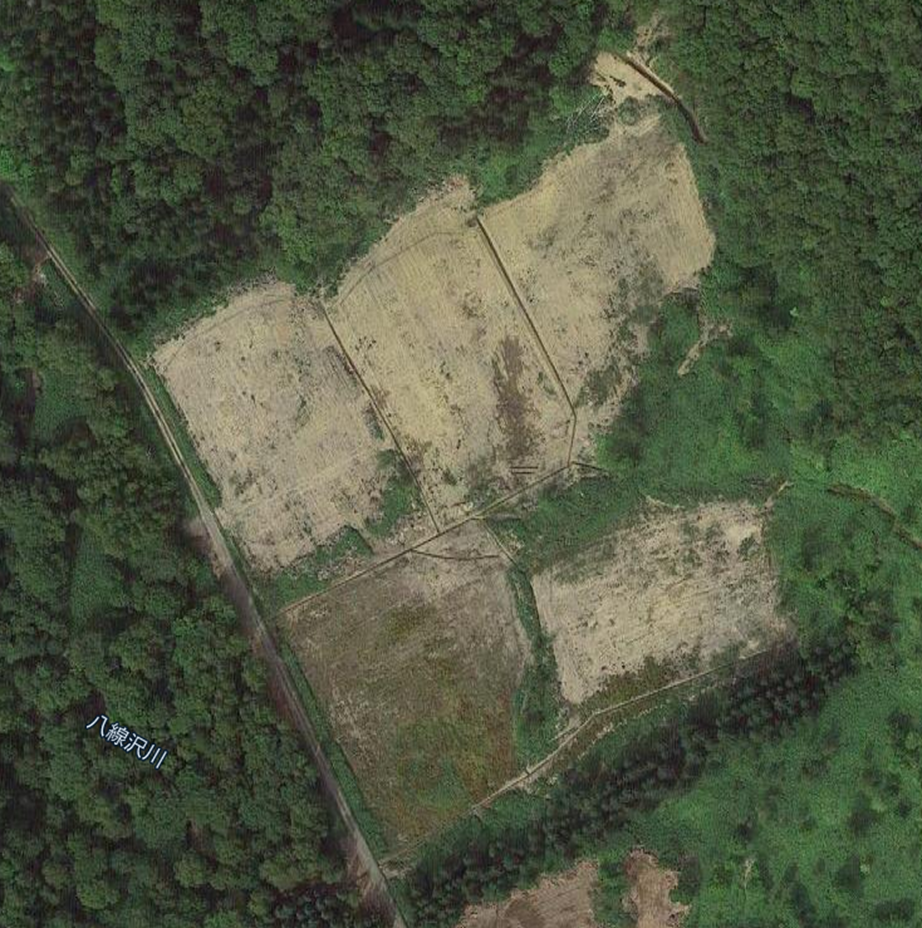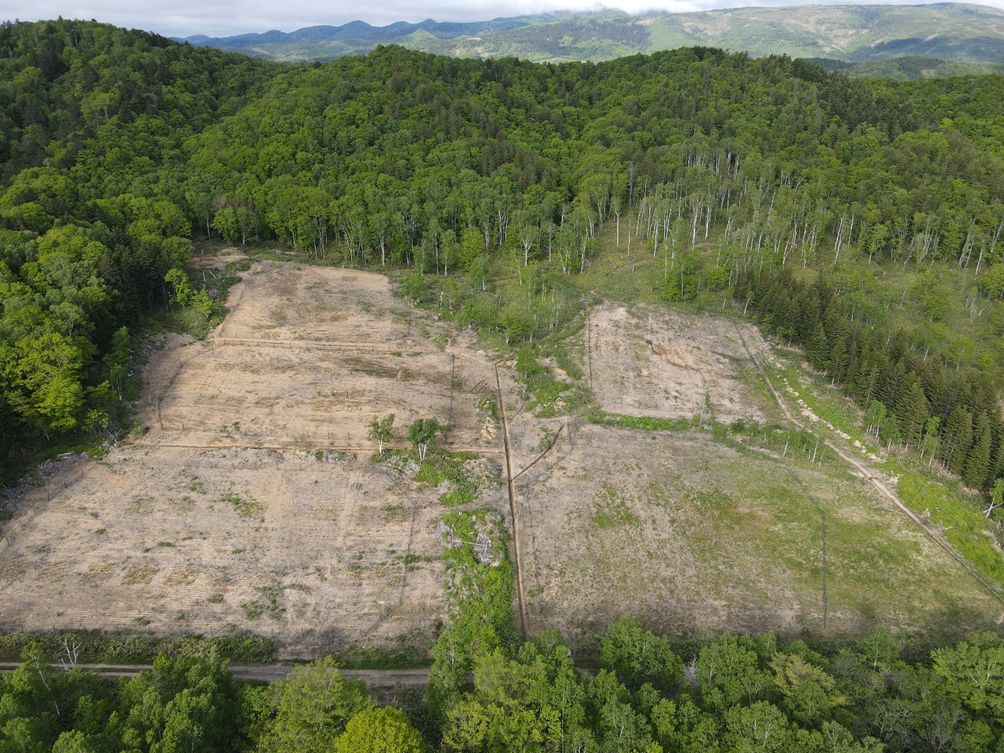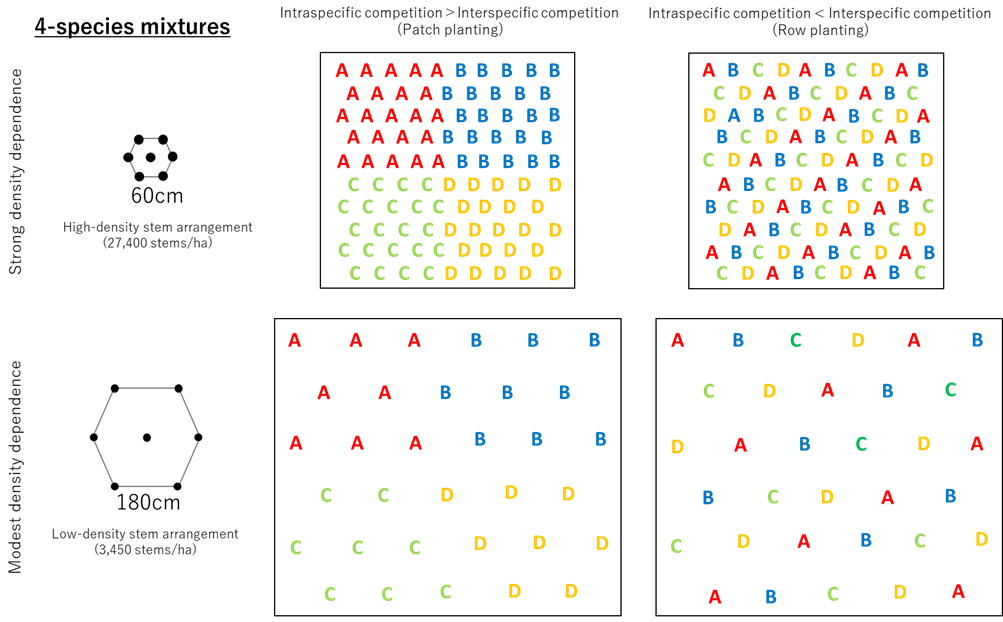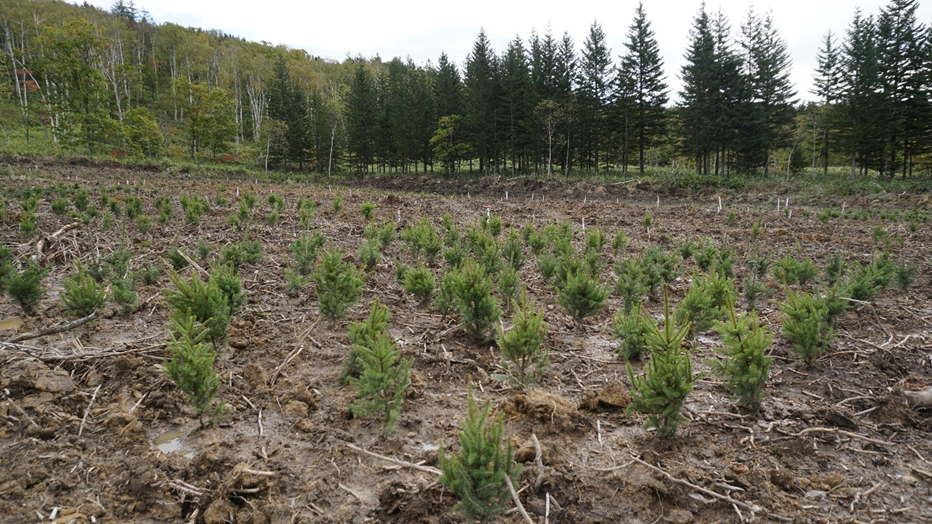BETA
The BETA (“Biodiversity Experiment for Tree planting Arrangement”) experiment was set up in Hokkaido, northern Japan, in the fall of 2020. The main objective is to find mechanistic explanations underlying multispecies coexistence and to understand how these fundamental processes support ecosystem functioning. The experiment is in the Teshio Research Forest of Hokkaido University, Japan. Principle investigator is Akira S Mori (the University of Tokyo).


Design
The experiment consists of five blocks, with all treatment sets (36 plots) in each block (all treatments have five replicates). Species richness levels are 1, 2, or 4 and include all possible combinations of the species. For mixtures, neighbourhood identity is also manipulated (neighbours can be conspecific or heterospecific: see the figure below for patch planting vs. row planting). For all combinations of species richness and neighbourhood identity, two different levels of stem density (approximately 27,400 stems and 3.450 stems per hectare, respectively) are prepared. Spatial locations of all plots (36 plots and additional 2 plots without plantings) are randomized within each block (resulting in 38 plots x 5 blocks = 190 plots). The study species include both evergreen conifers (Abies sachalinensis and Picea glehnii) and deciduous broadleaved trees (Quercus crispula and Betula ermanii), all native to the region. In total, the experiment has 11,520 trees as the initial setting.

Site characteristics
| BETA (Teshio) | |
|---|---|
| Country | Japan |
| Local name | Hokkaido |
| Biome | transition temperate to subboreal |
| Latitude | 44.59 |
| Longitude | 142.04 |
| Soil type | Dysteric Cambisol |
| Former land use | a secondary forest with sparse birch trees and a dense cover of dwarf bamboo; clear-cutting between winter 2018 and spring 2019; soil scarification for dwarf bamboo removal between summer 2019 and summer 2020 |
| Altitude | 42 |
| Design | patchwise, regular alternate |
| Plot shape | rectangular |
| Plot size (m^2) | 85 m² (low density) 33 m² (high density) |
| Plant distance (m) | 1.8 (low planting density), 0.6 (high planting density) |
| Planting date | October - November |
| Diversity variables | species richness |
| Diversity gradient | 0, 1, 2, 4 sp. |
| Size species pool | 4 |
| Species pool | Abies sachalinensis Betula ermanii Picea glehnii Quercus crispula |
| Contact person | Akira Mori Saito Dai |
| akkym@g.ecc.u-tokyo.ac.jp saito-dai@g.ecc.u-tokyo.ac.jp |
Research
The main objective is to understand how key processes of species coexistence (i.e., equalizing fitness differences and stabilizing niche differences based on modern theories of coexistence) can be related to processes of biodiversity-ecosystem functional relationships. Thus, in addition to tree growth and survival, natural enemies for trees will be also recorded.

Extra information
Send an e-mail to the contact person, or explore the publications that utilized data from this experiment.
Research papers
- This experiment is working hard on the first international publications